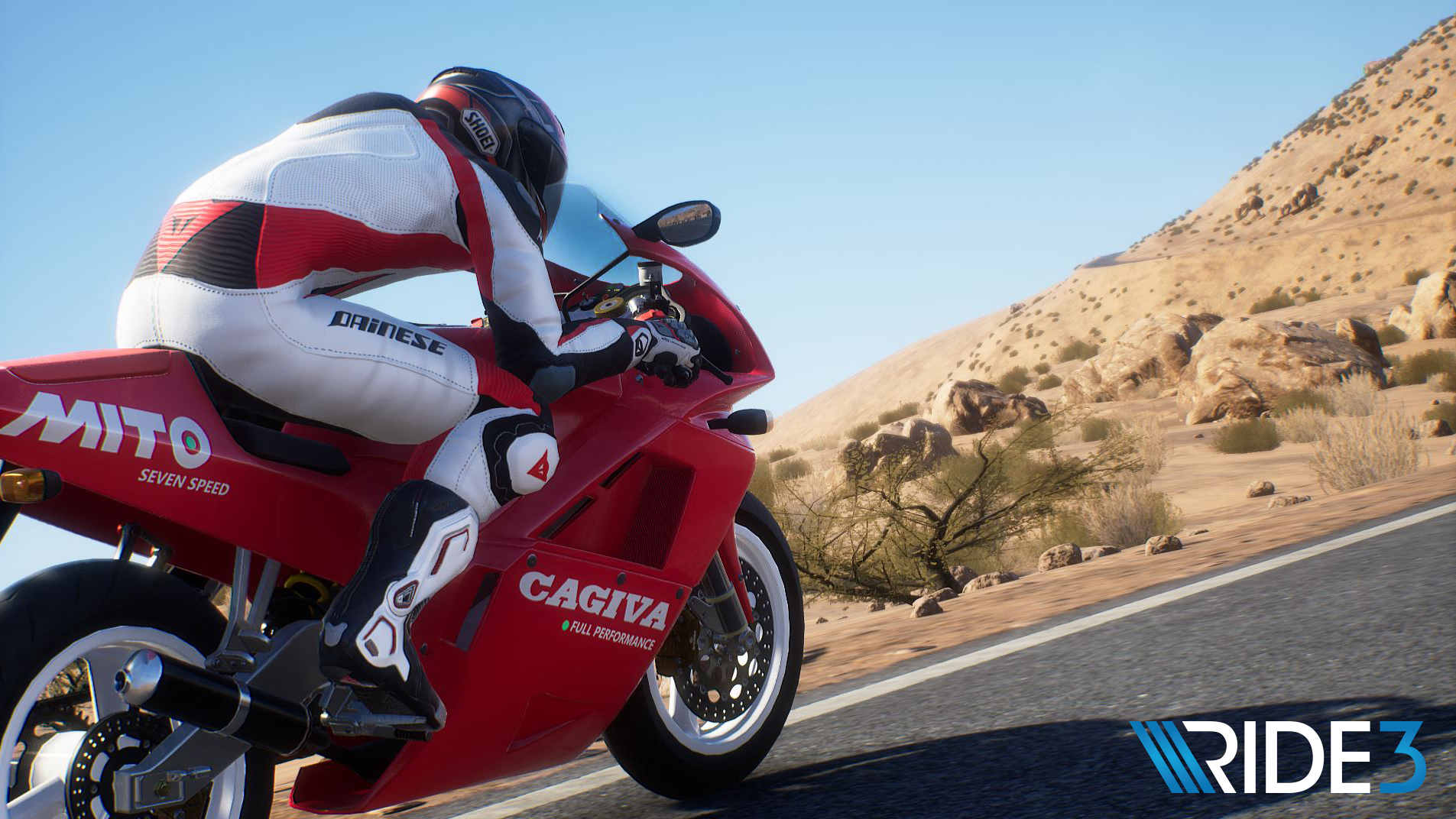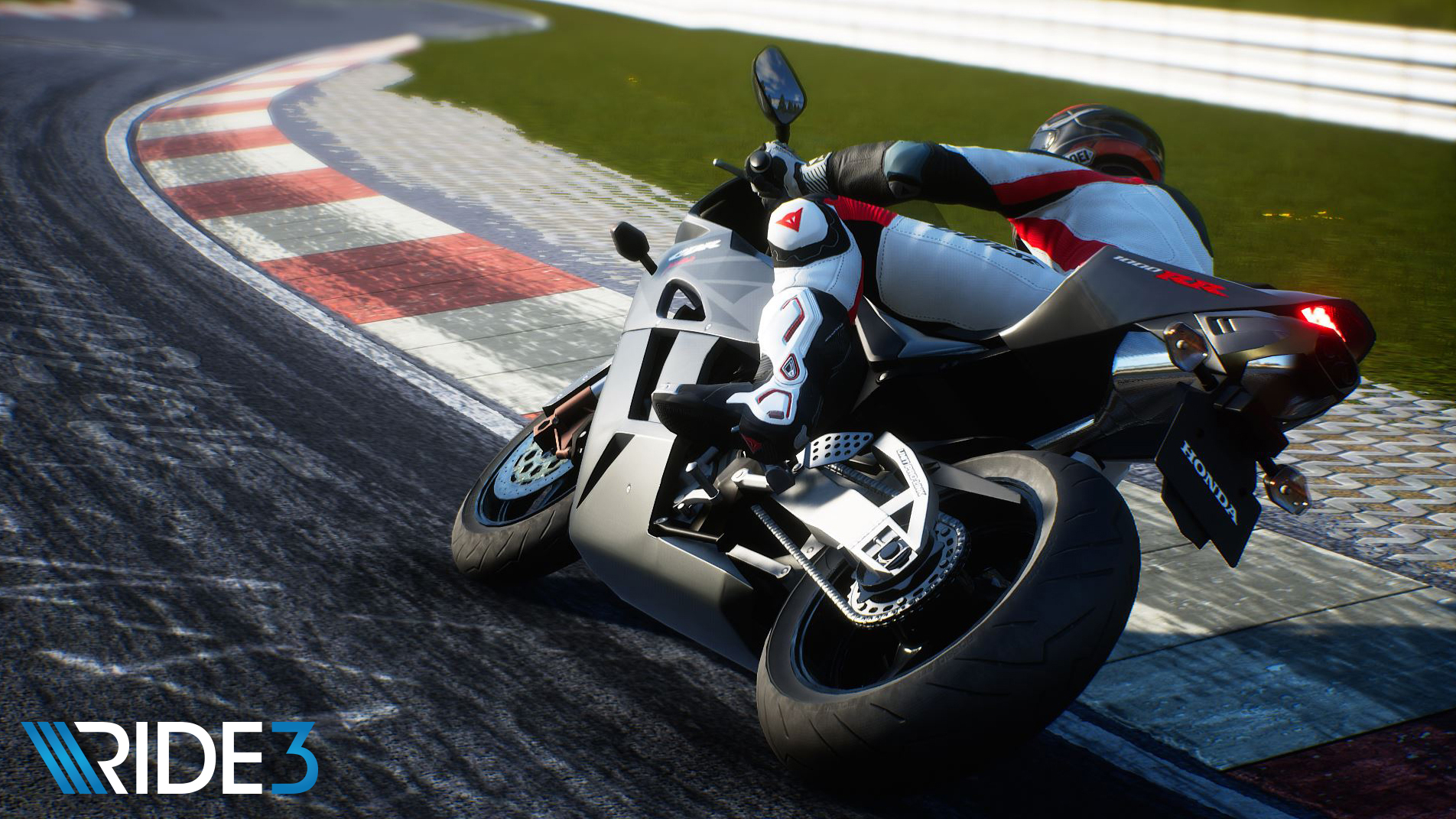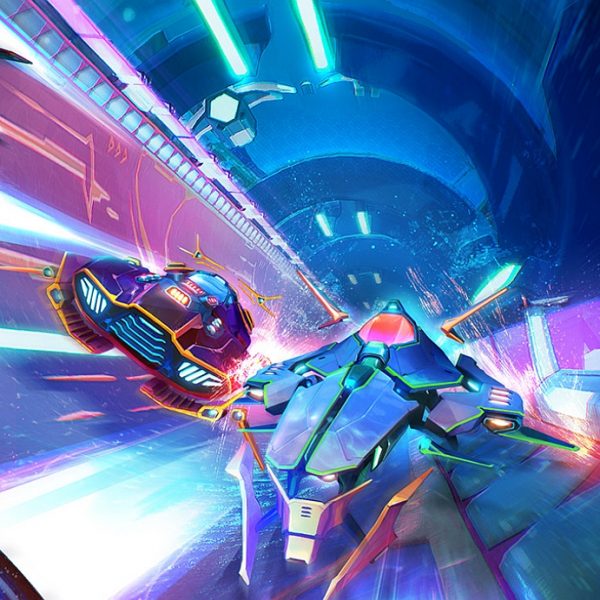Milestone returns with the third outing of their original IP Ride which aims to be essentially the “Gran Turismo of bike games” thanks to its comprehensive range of motorcycles and plethora of options. The original Ride, though rough around the edges, got Milestone’s new racing series off to a good start. The sequel improved upon Ride in just about every way and included a record-breaking bike roster to boot. With expectations set high, does Ride 3 once again raise the bar? Let’s find out.
Triumphant
Ride 3 continues the custom of providing a plethora of bikes with more than 230 available at launch (across 30 manufacturers), including 70 new to the series. Pages of bike history and performance details can be found with every model making Ride 3 a great place to educate yourself on all things two wheels.
Bikes are split between the following six classes: Naked, Maxienduro, Supermoto, Racing, Supercustom, and Sport. Each class features drastic changes in performance and handling characteristics which require different riding techniques to squeeze the most from. The bike roster features less repetition than found in earlier titles which is impressive considering the high number.
Regardless of bike chosen, each handles very intuitively thanks to tight and responsive controls which makes negotiating tracks a satisfying experience for the most part.
There are three main physics modes to choose from which modifies parameters such as anti-wheelie, traction control etc, although you do have the option to adjust these settings manually too. The rewind feature returns allowing you to undo a mistake as often as you like making for a more accessible experience if you wish to use it. In short: Ride 3 should satisfy the racing purists and newcomers alike thanks to its flexible settings.

Bike components such as engine, gearbox and wheels can be upgraded. You can tune each component and save your perfect setup with little technical know-how thanks to the succinct guides provided. Your rider’s appearance can be altered too with lots of riding outfits available.
I’d love to tell you that Ride 3 sees revolutionary improvements in bike audio compared to older titles, sadly this isn’t the case. As a matter of fact, the bike audio hasn’t really moved on at all. Instead of capturing the raw power and thrills of riding these amazing machines, the bikes drone on in an uninspiring manner exacerbated by the lack of any in-race music.
A change of course
Ride 3 features 30 locations complete with over 50 track variations. The title does away with several fictional racing circuits found in older titles in favour of additional real-world race tracks. Regretfully, this means you won’t find the undulating Stelvio National Park, the flowing Sierra Nevada Circuit, the Milano Street Circuit, or the very memorable Kanto Temples, all of which featured in the first two Ride titles.
In their place are the British trio of Brands Hatch, Cadwell Park, and Oulton Park, as well as Daytona and Laguna Seca representing the USA. There are a few fictional additions too: Tenerife supplies sea views, “The Snake” provides a 7-mile long expanse of American roads, and Lake Garda is arguably Ride 3’s best-looking track.
Unfortunately, Tenerife and “The Snake” feel too generic, too wide, and lack the thrills to become future classics for the series, Ride 3 then, has taken a step backwards with its fictional offerings.

The shift to the Unreal Engine 4 has done little for the racer. Running on the standard PlayStation 4, some textures look blurry and some tracks suffer from a lack of anti-aliasing. Most tracks tend to lack any real life or energy too which when coupled with the lacklustre audio package can make for some dull racing at times.
Most tracks can be raced in rainy conditions (where Ride 3 looks its best) and about half at night; curiously the Macau track is only available at night. As you can imagine you’ll need to exercise extra caution in the wet and in low light conditions.
A novel idea
Ride 3’s career mode consists of a 6-level tier system each playing host to 10 “volumes” of events governed by restrictions such as engine size, bike class, bike era, etc. You earn stars during events to progress through the tiers in typical racing game tradition.
Winning every event from any of Ride 3’s 54 volumes enables you to earn tokens which will, in turn, unlock an additional 6 special volumes which are necessary to progress to the final events.

Ride 3 offers varied event types outside of the typical racing events. This includes point to point races, drag racing (where gear change timing is key), Supermoto (with tight and technical tracks), and track days which task you to overtake slower opponents. Surprisingly, Ride 3 does away with the perfect trajectory, pairs races and head to head races found in Ride 2, only offering the new addition of night racing in their place.
Regardless of the AI difficulty chosen, some events seem to be overly difficult leading to stumbling blocks when progressing through the career mode.
Keeping up with the competition
Besides the career mode, Ride 3 contains the usual quick race and time attack modes as expected. Weekly challenges give you a bike and track combo and task you to beat the target times and other riders courtesy of online leaderboards.
You can take the competition online with support for public and private lobbies. Once in a lobby, players can vote on one of four random track and bike classes as well as physics settings and assists before heading to the track.

The action plays out reasonably smoothly and you’re never waiting too long between events. Sadly, you’re often not punished enough for major track cutting which could present a serious problem at certain tracks. It’s also possible to lose connection which boots you back to the main menu: clearly Ride 3’s online component isn’t without issue.
AI riders will fill in any gaps in the grid and if their difficulty level is set low they can feel more like annoying obstacles rather than opponents.
Ride 3 includes a basic photo mode allowing you to pause the action and play around with a range of settings along with a handful of filters giving you the chance to create your perfect snapshot. Finally, the newly added livery editor allows you to paint individual bike parts, and apply countless stickers and shapes (with support for up to 200 layers) enabling you to create just about any design you wish provided you have the skills and the patience.
Ride 3 should have built upon the promise that Ride 2 showed and become one of the best bike games ever released. Sadly, the transition to the Unreal Engine 4 does little for the title with a visual and audio package which has barely improved upon earlier titles in the series making for an ultimately underwhelming experience. As a result, Ride 3 is not a must-own title if you already own its predecessor. However, if you are new to the series, Ride 3 is marginally the better option.
Our Review
The good
- Tons of bikes
- cleaner career mode
- decent number of tracks
- will appeal to wide skill range
The bad
- Lacklustre bike audio
- inconsistent visuals
- no in-race music
- key fictional tracks missing
Summary
Ride 3’s transition to the Unreal Engine 4 does little for the title with a visual and audio package that has seen small improvements over earlier titles making for an ultimately underwhelming experience. Ride 3 is not a must-own title if you already own Ride 2, however, if you are new to the series, Ride 3 is marginally the better choice.





























